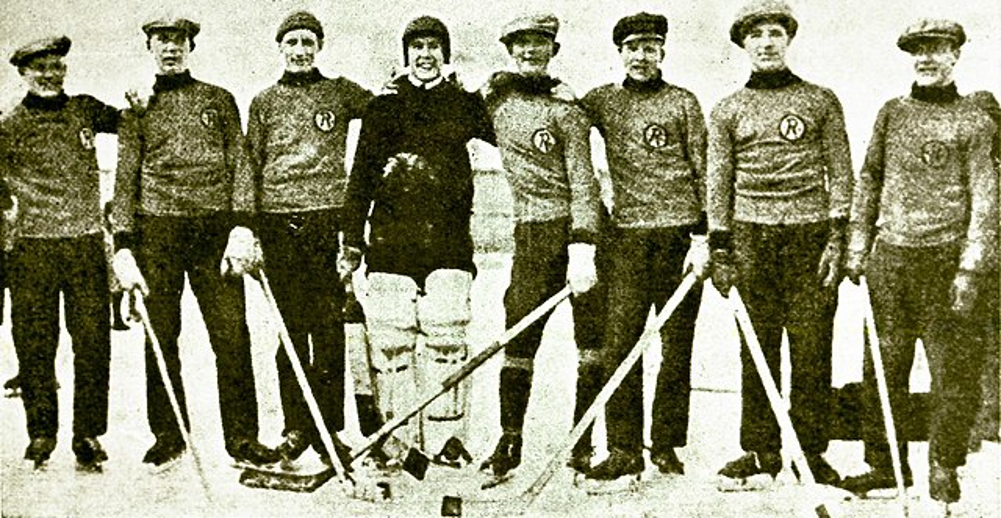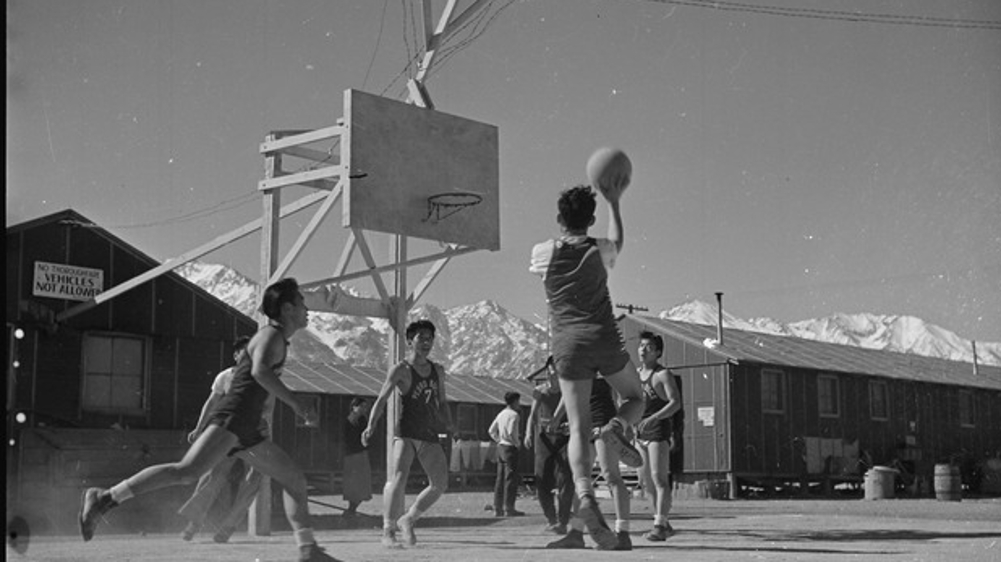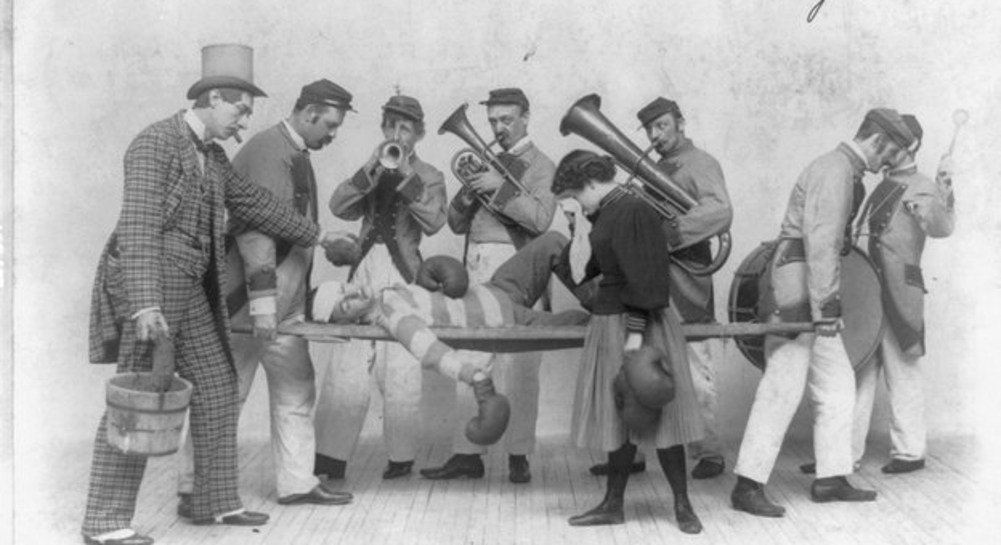Satchel Paige Baseball Star with a Golden Arm
Satchel Paige's baseball career was a unique blend of dominance, longevity, and showmanship. While official statistics are spotty due to his time in the Negro Leagues, his talent was undeniable. Nicknamed for his ability to throw a heavy fastball, Paige is credited with pitching in over 2,500 games and winning roughly 2,000 of them.
Despite his legendary status, segregation kept him out of Major League Baseball until he was 42 years old. However, he still made a significant impact. Debuting for the Cleveland Indians in 1948, Paige became the oldest rookie ever and helped them win the World Series that year. He continued to pitch effectively well into his 50s, setting the record for the oldest player in Major League history at 59.
Born July 7, 1906, in Mobile, Alabama, was Baseball Hall of Fame Pitcher, Satchel Paige. Paige was a six-time Negro League, and two-time MLB All-Star and a member of the 1948 World Series Champion Cleveland Indians, the same year he made his debut in the MLB at the age of 42. He began his professional baseball career in 1926 with the Chattanooga Black Lookouts of the Negro Southern League and became one of the most famous and successful players from the Negro leagues.
In the Negro Leagues he was known to have played for:
Chattanooga Black Lookouts (1926)
Birmingham Black Barons (1927–1930)
Baltimore Black Sox (1930)
Cleveland Cubs (1931)
Pittsburgh Crawfords (1932–1934, 1936)
Bismarck Churchills (1935)
Kansas City Monarchs (1935, 1939–1947)[1][2]
Trujillo All-Stars (1937)
New York Black Yankees (1941)
Memphis Red Sox (1943)
Philadelphia Stars (1946 and 1950)
Whitey Ford
Early Brilliance and Military Duty (1950-1952):
-Burst onto the scene in 1950, winning 9 games with a stellar 2.81 ERA as a rookie.
-Drafted into the US Army, missing the 1951 and 1952 seasons, showcasing his dedication and commitment despite the interruption.
Dominating the World Series Stage (1953-1967):
-Became a cornerstone of the New York Yankees dynasty, appearing in a record 22 World Series games.
-Earned a remarkable 10 World Series wins, solidifying his reputation as a "big game" pitcher.
-Led the American League in wins three times and contributed to six World Series championships for the Yankees.
A Master of Control and Efficiency (1953-1967):
-Never pitched more than 255 innings in a season, emphasizing his remarkable durability and reliance on pinpoint control.
-Boasted a career 2.75 ERA, showcasing his ability to consistently limit runs.
-Despite not relying on overpowering fastballs, he mastered deception and location, earning him respect from batters and fans alike.
Legacy and Lasting Impact (1967-present):
-Retired in 1967 with a 236-106 record, boasting the best winning percentage (.690) of any modern pitcher with at least 150 victories.
-Inducted into the Baseball Hall of Fame in 1974, solidifying his place among baseball's greats.
-Revered by Yankees fans and the baseball community for his humility, sportsmanship, and unwavering contributions to the team's golden age.
Born October 21, 1928, in New York City, NY was Baseball Hall of Fame Pitcher Whitey Ford. This legend was a ten-time MLB All Star. Whitey was part of World Series Championships with the New York Yankees in 1950, 53, 56, 58, 61, and 62. He was honored as the MVP of the 1961 Series as he also took home the AL Cy Young Award that year as well.
Greg Maddux The "Professor" on the Mound
-Path to the Big Leagues
Per Baseball Reference Maddux was drafted by the Chicago Cubs in the 2nd round of the 1984 MLB June Amateur Baseball Draft out of Valley High School in Las Vegas, Nevada. He made his MLB debut on September 2, 1986 against the Houston Astros and became a fixture on the Cubs staff the following season appearing in 30 games.
-Pinpoint control and dominance:
Maddux wasn't a flamethrower, but his accuracy and ability to locate his pitches frustrated batters. He won four Cy Young Awards in a row (1992-1995), a feat only matched by Randy Johnson.
-Atlanta Braves Era: His most successful stretch came with the Atlanta Braves (1993-2003). They won the National League West title every year during his tenure, reaching the World Series three times and winning it in 1995.
-Accolades and Longevity:
A stellar defensive player, Maddux holds the record for most Gold Glove Awards by a pitcher (18). He was an All-Star eight times and led the league in starts a record seven times. Remarkably durable, he only spent 15 days on the disabled list throughout his career.
-Career Highlights:
While never reaching 20 wins in a season more than twice, Maddux consistently piled up wins with a remarkable 18 seasons of at least 15 wins. He also holds the record for most seasons leading the league in games started (7).
Greg Maddux retired in 2008 and was inducted into the Baseball Hall of Fame in 2014. He's remembered as one of the smartest and most effective pitchers ever to play the game.
-Summary of Greg Maddux Career
Greg Maddux career sketch by the Society for American Baseball Research. Originally drafted in 1984 by the Chicago Cubs, Maddux won 18 Gold Gloves, four Cy Young Awards, four ERA titles, was an eight-time All-Star, and was on the 1995 World Series Champion Atlanta Braves. Born April 14, 1966 and inducted into the Baseball Hall of Fame, he is one of the top MLB players to have worn the Number 31 Jersey.
Tom Glavine Hall of Fame Pitching Ace
Early Promise and a Hall of Fame Trajectory:
Glavine's journey began with raw talent and a knack for locating pitches. Drafted by the Atlanta Braves in 1984, he developed under the tutelage of legendary pitching coach Leo Mazzone. Mazzone recognized Glavine's unique skillset, emphasizing precision and changing speeds over raw power. This approach honed Glavine's control, allowing him to induce weak contact and strand runners on base.
A Dominant Force in Atlanta
Glavine's dominance began in the late 1980s. He emerged as a key component of the "Macho Row" Braves pitching staff, alongside Greg Maddux and Steve Avery. Winning the National League Cy Young Award in 1991, Glavine showcased his ability to consistently excel. Notably, his win-loss record didn't always reflect his true value. Despite not racking up gaudy strikeout totals, Glavine often "pitched to contact" with incredible control, making him a nightmare for opposing hitters.
World Series Glory and Longevity
Glavine's career culminated with a World Series championship in 1995, the culmination of years of excellence with the Braves. He continued to pitch at a high level well into his 40s, defying conventional wisdom about the decline of pitchers. Throughout his career, Glavine displayed remarkable resilience, bouncing back from injuries and maintaining his effectiveness.
Basic Bio Line
Tom pitched for both the Atlanta Braves and the New York Mets. Glavine has had plenty to discuss in his brilliant MLB career: Two-time National League Cy Young Awards 1991 and 1998; World Series MVP 1995; Four-Time Silver Slugger; and Ten-time MLB All-Star. Tom Glavine was inducted into the Cooperstown, NY, Baseball Hall of Fame in 2014. Glavine is one of the top MLB players to have worn Jersey Number 47.
Carl Hubbell Hot Hand on the NY Giants Mound
Hubbell's journey to baseball stardom wasn't smooth. Initially discouraged from using his screwball due to fears of injury, he eventually found a home with the New York Giants. There, his unique delivery and pinpoint accuracy blossomed. The screwball, a pitch that dipped away from right-handed hitters, became his weapon of choice, leaving batters bewildered and frustrated.
Hubbell's dominance wasn't limited to a single pitch. His fastball was electric, his curveball sharp, and his control impeccable. He possessed an uncanny ability to locate his pitches, painting the corners of the strike zone with unnerving precision. This mastery translated into results: three National League ERA titles, two National League MVP awards, and a staggering .622 winning percentage across his career.
One of Hubbell's defining moments came in the 1934 All-Star Game. Facing a legendary lineup of National League hitters, including Babe Ruth, Lou Gehrig, and Jimmie Foxx, Hubbell struck out all nine batters in a row. This feat, unmatched for decades, cemented his reputation as a magician on the mound, capable of bending hitters to his will.
Hubbell's career wasn't without challenges. He pitched during the "Live-Ball Era," when offensive firepower ruled the game. Yet, even in this offensive climate, he managed to maintain an impressive sub-3.00 ERA throughout his career. Additionally, injuries and World War II limited his prime years.
Born June 22, 1903, in Carthage, Missouri, was Baseball Hall of Fame pitcher, Carl Hubbell. Carl was a nine-time MLB All-Star; was on the 1933 World Series Champion New York Giants and in fact won the NL MVP in 1933 and in 1936. Hubbell played for the New York Giants of the National League from 1928 to 1943, and remained on the team's payroll for the rest of his life, long after their move to San Francisco. Carl's accomplishments include setting the major league record for consecutive wins by a pitcher with 24. He used his famous screwball during the 1934 All-Star Game, when he struck out five future Hall of Famers – Babe Ruth, Lou Gehrig, Jimmie Foxx, Al Simmons and Joe Cronin – in succession.
The Dizzying Rise and Fall of a Baseball Icon
Dizzy's rise was meteoric. An Arkansas farm boy armed with a blazing fastball and a penchant for showmanship, he stormed the St. Louis Cardinals in 1930. His unhittable pitches and cocky charm captivated crowds, earning him the NL Rookie of the Year award. The following years saw him dominate, winning two MVP awards and leading the Cardinals to two World Series victories. His 1934 season remains etched in history, with Dizzy setting records for wins, strikeouts, and shutouts, all while his off-field antics kept sportswriters scrambling.
But like a shooting star, Dizzy's brilliance couldn't sustain its trajectory. Injuries and a clash with Cardinals management marred his later years. The once untouchable fastball faltered, replaced by whispers of decline and resentment. By 1937, he was traded to the Chicago Cubs, a bittersweet farewell to the team that made him a legend.
Dazzy Vance The Elusive Curveball Artist Who Defined an Era
Vance's journey began in Oklahoma, where he honed his skills on local sandlots. His unorthodox pitching style, characterized by a high leg kick and exaggerated windup, initially drew skepticism. However, his mesmerizing curveball, described as having a "late break" and "hypnotic movement," quickly silenced the doubters.
He made his major league debut with the Brooklyn Robins (later the Dodgers) in 1922, showcasing his dominance. He led the league in strikeouts four times and won 20 or more games in six seasons, establishing himself as one of the most feared pitchers in the National League.
Vance's peak came with the Pittsburgh Pirates, where he formed a formidable pitching duo with the legendary "Red" Faber. Together, they led the Pirates to two World Series appearances in 1925 and 1927, with Vance playing a pivotal role in their 1925 championship victory.
Beyond his statistics, Vance captivated fans with his unique personality. He was known for his quick wit and humor, often engaging in playful banter with teammates and reporters. His unorthodox delivery and captivating personality made him a true showman on the mound, further solidifying his place in baseball lore.
However, Vance's career was tragically cut short by injuries. After a shoulder injury sidelined him in 1935, he was forced to retire at 35. Despite his relatively short career, Vance left an undeniable mark on the game. He was inducted into the National Baseball Hall of Fame in 1949, a testament to his exceptional talent and impact on baseball history.
Dazzy Vance's legacy extends beyond his pitching prowess. He is remembered for his captivating personality, relentless competitive spirit, and influence on future generations of pitchers who sought to emulate his devastating curveball.
Andy Cooper's Hall of Fame Journey The Lefty Legend
Born in Texas in 1897 (or 1898, depending on the source), Cooper's baseball journey began with early struggles in the minor leagues. However, his talent and dedication shone through. He debuted with the Detroit Stars in 1920 and quickly became an elite pitcher. Unlike the lumbering lefties of the era, Cooper displayed exceptional agility, pinpoint control, and a knack for baffling batters with his curveball, fastball, and screwball. This unorthodox approach earned him the nickname "The Mystery Man" and made him a nightmare for opposing hitters.
Cooper's impact transcended his pitching prowess. He was a cerebral player known for his meticulous study of batters' weaknesses and ability to adjust his mid-game strategy. He embraced the "dead ball" era philosophy, focusing on control and precision rather than overpowering throws. This approach resulted in an impressive career ERA (Earned Run Average) of 3.58, a testament to his effectiveness.
Beyond his pitching brilliance, Cooper was a leader and a role model. He played a pivotal role in the growth of the Negro Leagues, inspiring younger players and advocating for increased recognition for the league. In 1937, he became player-manager of the Kansas City Monarchs, leading them to three Negro National League pennants.
Cooper's career spanned an impressive 22 seasons, during which he amassed a win-loss record of 118-57, a remarkable feat considering the grueling schedule of the Negro Leagues. He retired in 1941 and remained actively involved in baseball, sharing his knowledge and experience with aspiring players.
Despite his undeniable talent and contributions, Cooper's accomplishments remained largely unrecognized due to baseball's racial segregation at the time. However, his legacy wasn't forgotten. In 2006, he was elected to the National Baseball Hall of Fame, solidifying his place among baseball's all-time greats.
Andy Cooper's story is not just about a dominant pitcher; it's about resilience, talent overcoming adversity, and a dedication to the game he loved. He redefined the lefty position, embraced innovation, and became a leader during a crucial period in baseball history. His induction into the Hall of Fame serves as a reminder of the incredible talent that thrived in the Negro Leagues and ensures that "Lefty" Cooper's legacy continues to inspire generations of baseball fans and players alike.
A Look at the Knuckleball King Phil Niekro's Enduring Baseball Legacy
Early Journey to the Big Leagues
Niekro's journey began with raw talent and a unique repertoire. While his early career saw him struggle to find consistency with traditional pitches, his experimentation with the knuckleball proved a turning point. This deceptive pitch, thrown with minimal spin, fluttered and danced erratically, making it incredibly difficult for hitters to connect. Niekro mastered its subtle control, becoming the first pitcher to win 300 games primarily throwing the knuckleball.
His dominance began in the 1970s. He led the National League in wins twice and earned five Gold Glove Awards for his fielding prowess. Niekro's longevity was remarkable. He pitched for a staggering 24 seasons, defying Father Time with his unorthodox style. In 1979, at the age of 39, Niekro won 21 games while also leading the league in losses (20) – a feat unmatched since 1901. This quirky statistic highlighted both the unpredictable nature of the knuckleball and Niekro's ability to navigate its challenges.
Beyond statistics
Niekro's impact transcended the field. He became an ambassador for the knuckleball, inspiring a generation of young pitchers to embrace the unconventional. His calm demeanor and dedication to his craft earned him the respect of teammates and opponents alike. Niekro's late-career success, defying expectations and pitching competitively into his 40s, served as an inspiration for perseverance and defying limitations.
While some might consider the knuckleball a trick pitch, Niekro elevated it to an art form. He carved a unique path to greatness, proving that success can be achieved through innovation and unwavering dedication. Phil Niekro's legacy extends beyond his 318 wins and five All-Star appearances. He is the undisputed "Knuckleball King," a testament to the power of embracing the unconventional and leaving a lasting mark on the game he loved.
Basic Bio Line
The life and career bio of Phil Niekro. Niekro pitched wearing the Number 35 on the Milwaukee Braves (1964-65), Atlanta Braves (1966-83 and 1987), New York Yankees (1984-85), Cleveland Indians (1986-87), and Toronto Blue Jays (1987) for 24 seasons. He appeared in five All-Star games, won the ERA title, and was awarded five Gold Gloves throughout his career. He is one of the top MLB players that wore Jersey 35.
Catfish Hunter Baseball Career
Born in North Carolina 1946, Hunter's love for the outdoors translated into exceptional athleticism. Drafted by the Kansas City Athletics in 1964, he quickly rose through the minor leagues and debuted in 1965. Hunter's strength wasn't overpowering fastballs but a deceptive arsenal of off-speed pitches and pinpoint control. He quickly became a key contributor to the Athletics' success, playing a vital role in their World Series run in 1974.
Hunter's quiet demeanor masked a fierce competitive spirit. He was a master strategist on the mound, keeping hitters off balance and frustrating them with his pinpoint accuracy. His sub-3.00 best exemplifies his unwavering control earned run average (ERA) in five consecutive seasons, a feat rarely achieved. By the late 1970s, Hunter was widely considered one of the best pitchers in baseball, earning him the coveted first-ever multi-million dollar contract with the New York Yankees in 1975.
Despite facing increased pressure from the Yankees, Hunter continued to excel. He helped them reach the World Series in 1976 and 1977, showcasing his dominance on the biggest stage. However, his career was tragically cut short by arm trouble at the age of 33.
Even though he retired early by some standards, Catfish Hunter's legacy remains secure. He finished his career with over 250 wins, a career ERA of sub-3.00, and a World Series championship. But more importantly, he redefined pitching success, proving that control and strategy could be just as effective as raw power. In 1987, he was deservedly inducted into the Baseball Hall of Fame, a testament to his quiet dominance on the mound.













